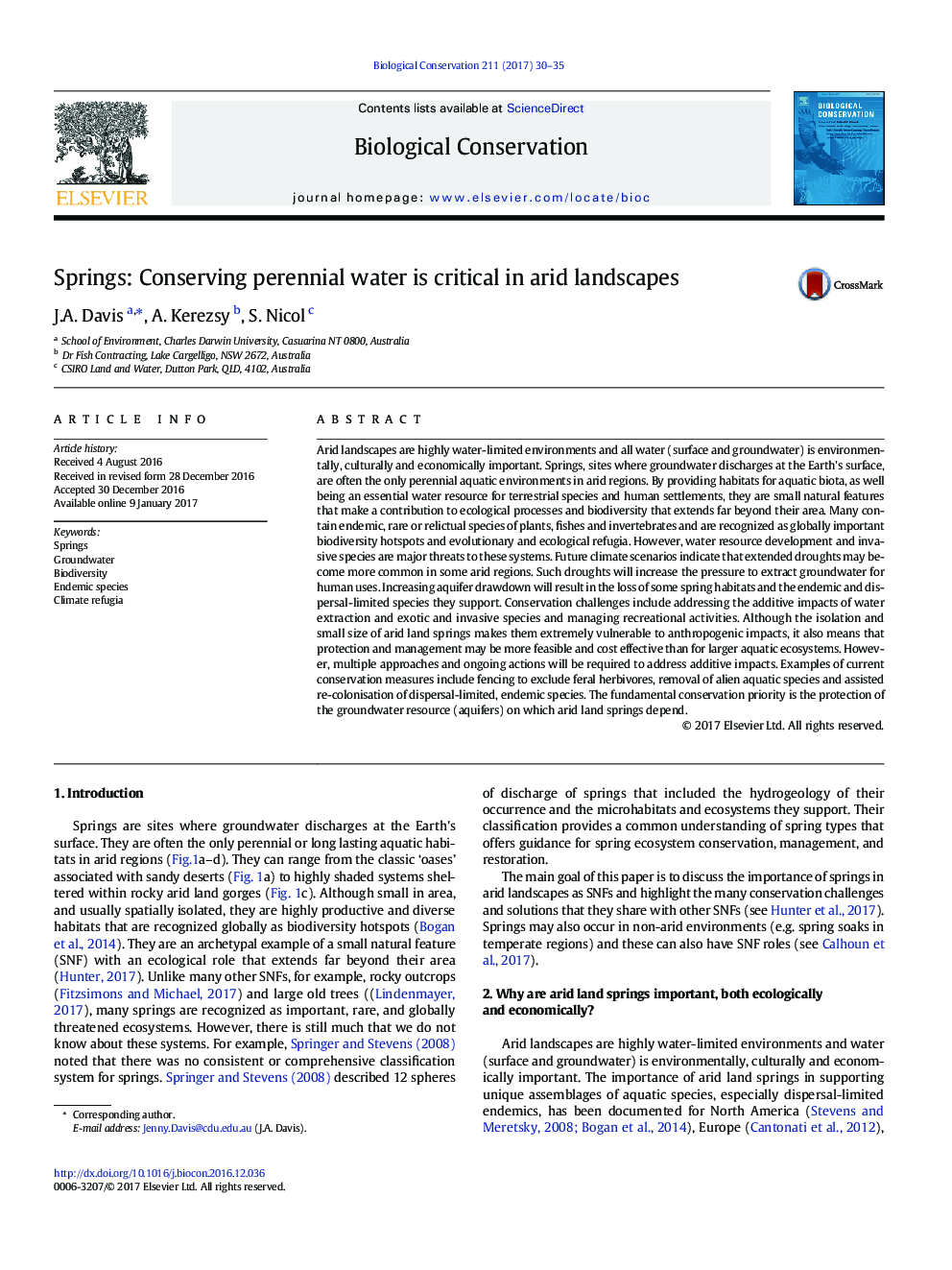| کد مقاله | کد نشریه | سال انتشار | مقاله انگلیسی | نسخه تمام متن |
|---|---|---|---|---|
| 5742914 | 1412290 | 2017 | 6 صفحه PDF | دانلود رایگان |
- Arid land springs are small natural features that often contribute to biodiversity and ecological processes beyond their limited areal extent.
- Some arid land springs that contain endemic, rare and relictual species are important evolutionary and ecological refuges.
- Major threats to arid land spring ecosystems include groundwater extraction and the impacts of invasive and feral species.
- Many arid land springs will require ongoing protection and multiple conservation actions to address additive and interacting threats.
- Protection of the groundwater resources on which springs depend is a critical conservation action.
Arid landscapes are highly water-limited environments and all water (surface and groundwater) is environmentally, culturally and economically important. Springs, sites where groundwater discharges at the Earth's surface, are often the only perennial aquatic environments in arid regions. By providing habitats for aquatic biota, as well being an essential water resource for terrestrial species and human settlements, they are small natural features that make a contribution to ecological processes and biodiversity that extends far beyond their area. Many contain endemic, rare or relictual species of plants, fishes and invertebrates and are recognized as globally important biodiversity hotspots and evolutionary and ecological refugia. However, water resource development and invasive species are major threats to these systems. Future climate scenarios indicate that extended droughts may become more common in some arid regions. Such droughts will increase the pressure to extract groundwater for human uses. Increasing aquifer drawdown will result in the loss of some spring habitats and the endemic and dispersal-limited species they support. Conservation challenges include addressing the additive impacts of water extraction and exotic and invasive species and managing recreational activities. Although the isolation and small size of arid land springs makes them extremely vulnerable to anthropogenic impacts, it also means that protection and management may be more feasible and cost effective than for larger aquatic ecosystems. However, multiple approaches and ongoing actions will be required to address additive impacts. Examples of current conservation measures include fencing to exclude feral herbivores, removal of alien aquatic species and assisted re-colonisation of dispersal-limited, endemic species. The fundamental conservation priority is the protection of the groundwater resource (aquifers) on which arid land springs depend.
Journal: Biological Conservation - Volume 211, Part B, July 2017, Pages 30-35
